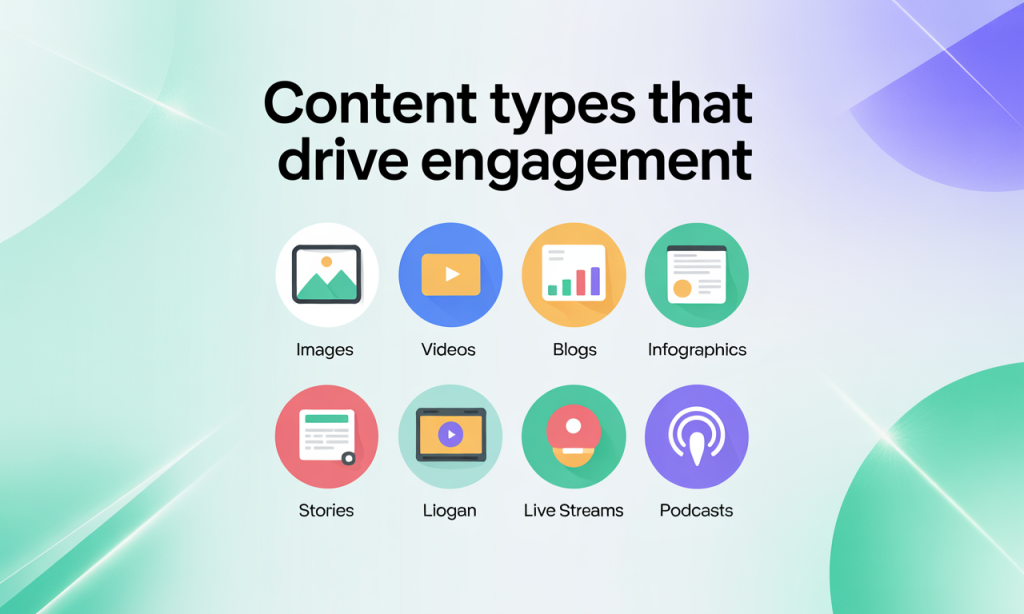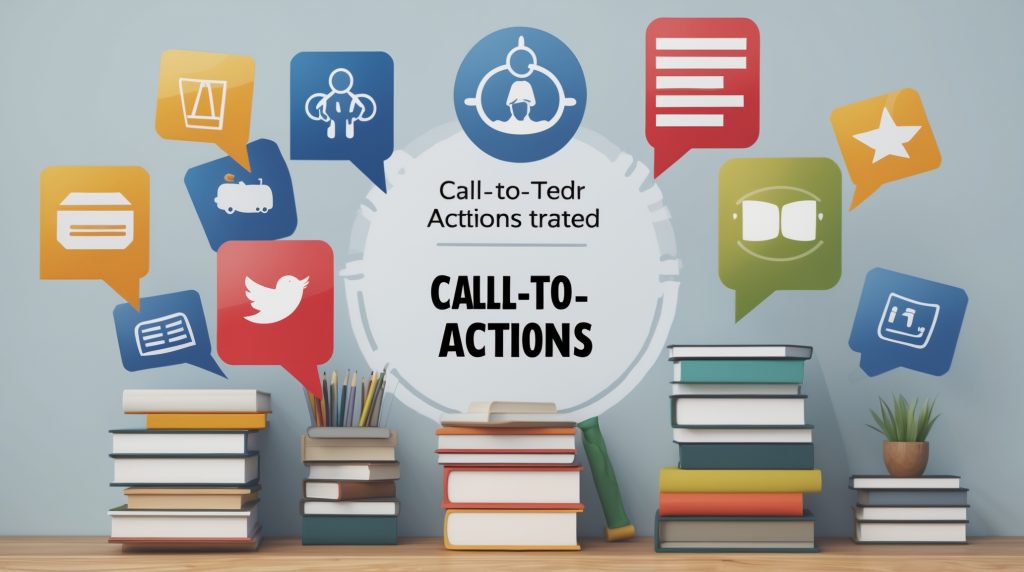Nowadays, on the high-speed train of digital marketing, having a social media account is not enough. The challenge is standing out, stopping the scroll, and spurring engaging behavior. To create that, you need compelling content that addresses your audience’s pain points, feelings, and aspirations.
Great content isn’t just pretty, it’s strategic. It’s on-brand. It drives action. Whether you’re trying to raise awareness, generate sales, or foster community, your content should be doing the lifting.
Below, we’ll delve into the foundational elements of creating engaging content, from content types and visual content strategy to effective social media copywriting.
1. Content Types That Drive Engagement

And to keep them interested and your brand at the top of their list, you should mix up the types of content you publish. Then there were the various formats that would be attractive to different preferences, learning styles, and customer journey stages.
A. Images
Most platforms are built on silent images. Photos and images. You can make a fast impression on visual-heavy outlets such as Instagram and Pinterest with high-quality photos, branded images, and product shots.
B. Videos
Video still gets the best engagement on all platforms. Reels, TikToks, or YouTube Shorts are all great for storytelling, behind-the-scenes, tutorials, snaps, or quick tips. Longer videos can be a good choice for product walkthroughs, customer testimony, and educational content.
C. Blogs
The blog content you promote across social media brings attendees back to your site and educates and informs them. It helps establish your brand as an expert and provides SEO benefits.
D. Infographics
Infographics strip away complexity and make complex statistics easier to understand. Great for LinkedIn, Pinterest, and blog posts, they work well for how-tos, statistics, a nd procedures.
E. Stories
The ephemeral nature of stories on Instagram, Facebook, and Snapchat communicates their urgency; they last just 24 hours. They’re perfect for polls, short updates, questions, and behind-the-scenes glimpses. Stories encourage engagement and can solicit on-the-spot audience feedback.
F. Live Streams
Live videos create transparency and authenticity. Q&A sessions with hosts, product announcements,r demonstrations , or video tutorials. They drive real-time interaction and add a human touch to your brand.
G. Podcasts
While you can’t exactly post an episode of your podcast on a common social channel, you can do it justice through audiograms, quotes, or teasers. They can be an excellent vehicle for deep storytelling and establishing oneself as a thought leader.
A combination of these formats not only makes your feed come alive, it also speaks to a broader audience and makes sure your message lands on the conscious (and subconscious) level through different sensory triggers — visual, audio, and written.
2. Visual Content Strategies: Tools, Branding, and Consistency
In an economy of attention, your visual identity is your first impression. A good visual content strategy means every content asset is synonymous with your brand, all while capturing the right kind of attention.
A. Use Graphic Design Tools
You don’t have to be a designer to produce beautiful content. Tools such as Canva, Adobe Express, Crello, and Figma provide easy-to-use templates for everything from Instagram posts to infographics and ads. They give you back your brand visuals by salvaging precious time.
B. Maintain Brand Consistency
Consistency builds trust. Maintain a distinct brand style: keep your colors, fonts, logo implementation, and design elements consistent no matter where you are posting. Create a brand kit and distribute it to your team to prevent inconsistent signals in your visuals.
C. Optimize for Each Platform
Create content for a specific platform, size, and style. Instagram likes square and vertical photos, LinkedIn prefers a professional tone, and TikTok and Reels like big and fast. Design with the mobile viewing experience in mind, e.g., readable text sizes and thumb-friendly designs.
D. Use Templates and Schedule
Develop reusable content formats for your regular posts—think quotes, tips, or weekly topics—to save time and maintain cohesiveness in your brand. From rescheduling posts like Later, Buffer, or Meta Business Suite to keeping the posting schedule regular.
E. Focus on Accessibility
Make your designs available to everyone by incorporating high-contrast colors, easy-to-read fonts, and alt text on images. Add captions to videos and maintain a clean layout to help with visual or hearing impairment.
Visual content won’t just make your feed look good; it should make your message clearer, your brand stronger, and your audience more connected to you.
3. Copywriting for Social Media: Headlines, Descriptions, and CTAs
They may focus on your visuals, but your words move the conversation along. Solid social media copywriting is clear, creative, and persuasive. It enables you to inform, engage, and convert.
A. Headlines That Hook
The first few words of your caption or ad copy should be interesting. Ask questions, make bold statements, dangle curiosity gaps, and go benefits-driven. Examples:
- “Struggling to grow on Instagram? Here’s why.”
- “Don’t launch your next product until you do this…”
- “The 3 secrets our clients use to triple engagement.”
B. Descriptions Of Value
After hooking your audience, the body of your caption or post is the place to educate, entertain, and empathize. See Shell text for irresistible offers. Break up long texts into bullet points or short paragraphs. Stay true to your brand voice in any tone: professional, witty, warm, bold, and everything else.
C. Call-to-Actions (CTAs) That Work

Every content must invite an action, even if that action is as small as liking, sharing, or commenting. Include direct, action-oriented calls to action (CTAs) that align with your objective:
- “Save this post for later.”
- “Tag someone who nethis thi.s”
- Visit the link. b.io”
- Your questions in the comments
- “Try our free demo today.”
Personalized or time-specific CTAs do even better: “Only 3 days left to join!” or “Hey marketers, here comes one for you!”
Good copy doesn’t simply fill space — we’re creating a response in our audience, making them feel, do something, or think differently.
Final Thoughts
Making great content for social media isn’t a matter of luck—it’s a question of knowing your audience, using the correct form and ats , and consistently offering value. Marry the power of multiple content types with strategic design and great copy, and you have a presence that looks good and makes a difference.
When others are making noise, your content needs to be the signal. Educate, motivate, entertain, and never stop trying to find new ways to serve your readers with each new post.
